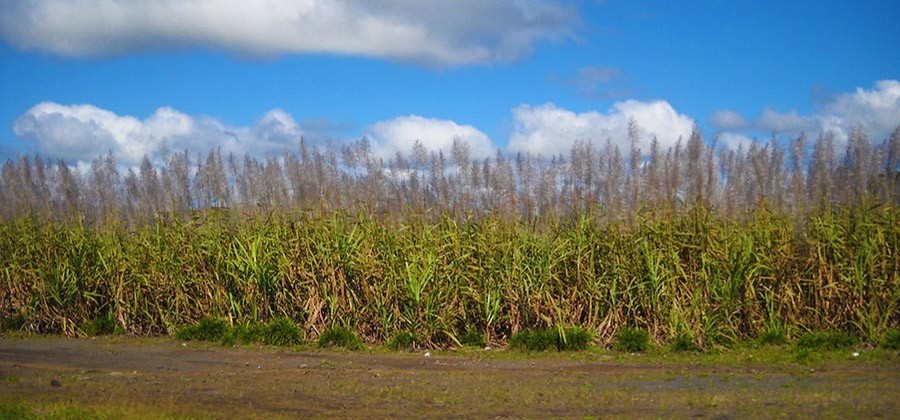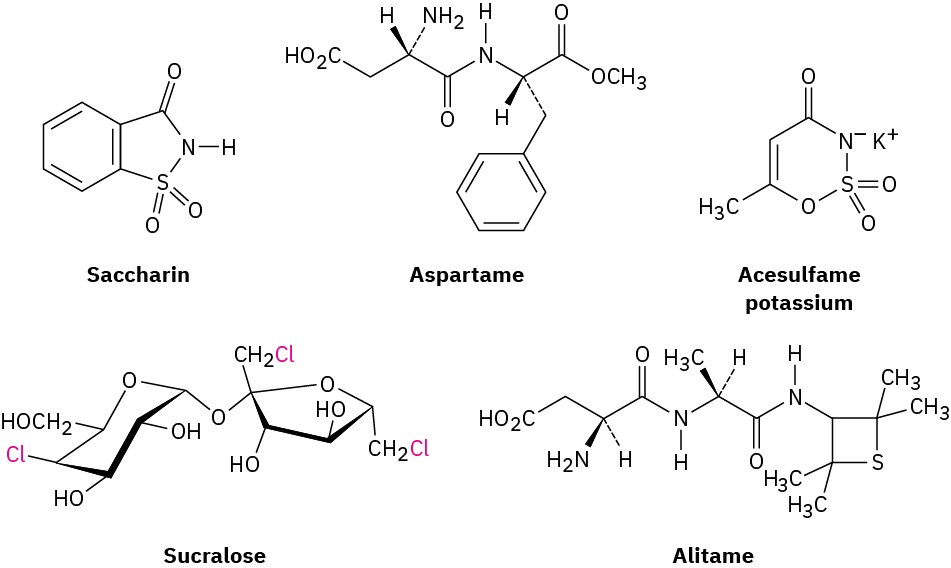Chemistry Matters — Sweetness
Say the word sugar and most people immediately think of sweet-tasting candies, desserts, and such. In fact, most simple carbohydrates do taste sweet but the degree of sweetness varies greatly from one sugar to another. With sucrose (table sugar) as a reference point, fructose is nearly twice as sweet, but lactose is only about one-sixth as sweet. Comparisons are difficult, though, because perceived sweetness varies depending on the concentration of the solution being tasted and on personal opinion. Nevertheless, the ordering in Table
- is generally accepted.
The desire of many people to cut their caloric intake has led to the development of synthetic sweeteners such as saccharin, aspartame, acesulfame, and sucralose. All are far sweeter than natural sugars, so the choice of one or another depends on personal taste, government regulations, and (for baked goods) heat stability. Saccharin, the oldest synthetic sweetener, has been used for more than a century, although it has a somewhat metallic aftertaste. Doubts about its safety and potential carcinogenicity were raised in the early 1970s, but it has now been cleared of suspicion for human consumption.

Figure 25.13 The real thing comes from sugarcane fields like this one. (credit: modification of work “Flowering sugarcane field” by “carrotmadman6”/Flickr, CC BY 2.0)
Table 25.1 Sweetness of Some Sugars and Sugar Substitutes
|
Name |
Type |
Sweetness |
|
Lactose |
Disaccharide |
0.16 |
|
Type |
Sweetness |
|
|
Glucose |
Monosaccharide |
0.75 |
|
Sucrose |
Disaccharide |
1.00 |
|
Fructose |
Monosaccharide |
1.75 |
|
Cyclamate |
Synthetic |
40 |
|
Aspartame |
Semisynthetic |
180 |
|
Acesulfame-K |
Synthetic |
200 |
|
Saccharin |
Synthetic |
350 |
|
Sucralose |
Semisynthetic |
600 |
|
Alitame |
Semisynthetic |
2,000 |
|
Neotame |
Semisynthetic |
6,000 |
|
Advantame |
Semisynthetic |
20,000 |
Acesulfame potassium, one of the more recently approved sweeteners, is proving to be extremely popular in soft drinks because it has little aftertaste. Sucralose, another recent sweetener, is particularly useful in baked goods because of its stability at high temperatures. Alitame, marketed in some countries under the name Aclame, is not approved for sale in the United States. It is some 2000 times as sweet as sucrose and, like acesulfame-K, has no aftertaste. Of the eight synthetic sweeteners listed in Table 25.1, only sucralose has clear structural resemblance to a carbohydrate, although it differs dramatically in containing three chlorine atoms. Aspartame, Alitame, and Advantame are dipeptides.


